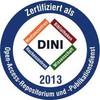PDF, English
 Restricted access: Repository staff only until 7 October 2026. Restricted access: Repository staff only until 7 October 2026.
Login+Download (10MB) | Terms of use |
Abstract
RIG-I-like receptors (RLRs) are cytosolic pattern-recognition receptors (PRRs) recognizing viral double-stranded RNA (dsRNA). The RLR family comprises three PRRs: RIG-I, MDA5 and LGP2. Activation of RIG-I and MDA5 results in the induction of an antiviral state in the cell exposed to an PRR inducer by means of the expression of multiple interferon (IFN)-stimulated genes (ISGs). In addition, activated cells synthesize and release type I and III IFNs that act primarily in a paracrine manner to induce ISG expression in bystander cells. RIG-I and MDA5 possess two caspase activation and recruitment domains (CARDs), essential for signal transduction via MAVS. In contrast, LGP2 lacks CARDs and, thus, cannot activate the IFN response on its own. LGP2 was demonstrated by many groups, including ours, to modulate RLR signaling. It enhances the MDA5 response and suppresses RIG-I-mediated signaling. So far, it remains enigmatic how LGP2 controls RLR signaling and whether additional interacting proteins or post-translational modifications (PTMs) of LGP2 are involved. Regarding the latter, our group previously identified putative phosphorylation sites of LGP2 at S169, S365 and S464, phosphorylation of which might be important for LGP2 function. One of them, S169, is located within motif III of the helicase domain that is conserved between LGP2, MDA5 and RIG-I (S490 and S411, respectively).
In this work I aimed to deeper understand the mechanisms controlling RLR signaling by addressing the following aims: (1) to determine if LGP2 requires co-factors for the upregulation of MDA5 signaling and, if confirmed, uncover their functional roles; (2) to investigate the importance of LGP2 phosphorylation at the newly identified phosphorylation sites; (3) to evaluate the role of RIG-I and MDA5 phosphorylation in the conserved helicase motif III.
Regarding aim 1, I determined the time-resolved LGP2 interactome using A549 RIG-IKO cells expressing HA-tagged LGP2 and transfected with dsRNA. Applying stringent selection criteria to the proteome data, I selected 287 hits that were validated by using two knockdown siRNA-based screens, coupled with dsRNA stimulation. In this way, I identified four LGP2 interactors possibly regulating MDA5: RBM8A, RTCB, HARS2 and PFN1. Owing to time constraints, I could not conduct mechanistic studies of these proteins.
Regarding aim 2, I could confirm that LGP2 is a phosphorylated protein. Using S169D and S464D phosphomimetic mutants of LGP2, I could disturb the ability of LGP2 to upregulate the MDA5 response to viral and endogenous RNA, arguing that phosphorylation at these sites reduced ISG induction by MDA5. Consistently, phosphoablative amino acid substitutions in LGP2 restored or even upregulated IFN response.
In the third part of my thesis, I expanded my analysis to RIG-I and MDA5. I found that phophomimetic substitutions in both RLRs attenuated IFN signaling to synthetic dsRNA and viral infections whereas the phosphoablative S490A replacement in MDA5 reconstituted the response. The only exceptions were S365A in LGP2 and S411A in RIG-I that could not restore functionality of receptors. These results argue for the regulation of RLR signaling by phosphorylation at two sites in LGP2 (S169 and S464) and the S169 homologous position in MDA5 and RIG-I (S490 and S411, respectively).
Taken together, my results broaden our knowledge about the mechanisms regulating the RLR-induced IFN response. Knowledge about enhancing or suppressing the IFN response might be useful for the development of antiviral therapies and for anti-inflammatory drugs mitigating autoimmune diseases caused by incorrect RLR signaling.
| Document type: | Dissertation |
|---|---|
| Supervisor: | Bartenschlager, Prof. Dr. Dr. h.c. Ralf |
| Place of Publication: | Heidelberg |
| Date of thesis defense: | 25 September 2025 |
| Date Deposited: | 09 Oct 2025 09:32 |
| Date: | 2026 |
| Faculties / Institutes: | The Faculty of Bio Sciences > Dean's Office of the Faculty of Bio Sciences |









